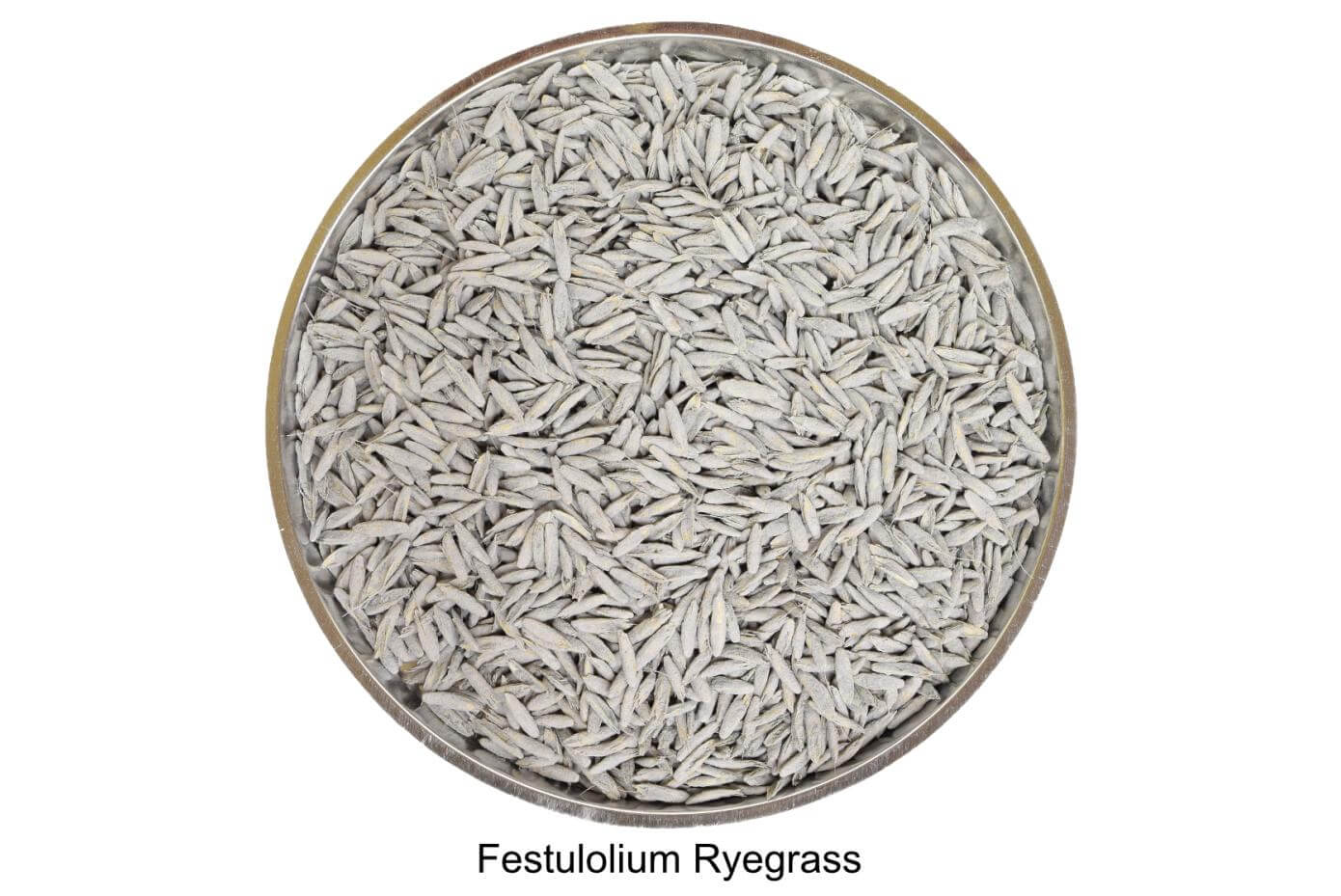Spring Green Festulolium
Spring Green is both cold and drought tolerant, a high yielder, and very adaptable.
Breeding History
Originating from the breeding work of Mike Casler at the University of Wisconsin, Spring Green first came to the market around 1999. Selections of grazed plants in Wisconsin pastures were made specifically for improved cold tolerance and drought survivability. While there have been numerous other festuloliums developed since then, Spring Green remains one of the standard top-performing festuloliums.
Strength of the Parents
Spring Green is a cross between fescue and tetraploid ryegrass, capitalizing on the strengths of each, including:
- Quick germination and fast establishment.
- High palatability and easily digestible.
- Relative feed value similar to tetraploid ryegrass.
- Better summer grazing over ryegrass, especially under higher temperatures.
- Deeper rooted than ryegrass.
A Hardy and Robust Variety
Spring Green has better-than-average winter hardiness, is a consistent high yielder, and usually has a 2-3 year life span. It is best adapted to regions where that experience period of cool temperatures and humidity during the year. Due to its deep and robust root system, Spring Green can tolerate a wide range of climatic stresses after establishment including heat, drought and cold. Spring Green has a wide geographic adaptation, stretching from Southern Canada to the Northern half of the transition zone.
Widely Tested
Spring Green has been evaluated at numerous university sites throughout the years providing ample comparison data. It is the standard check variety in many trials. These locations include:
- University of Wisconsin
- Cornell University
- University of Kentucky
- Michigan State University
- Ohio State University
- Penn State University
- University of Tennessee
- University of Illinois
Uses
Spring Green can be grazed, hayed or green chopped. It mixes well with other grasses and legumes and can be fed to all livestock categories. It is fast establishing, and early maturing capable of production 5-9 tons of DM/A.
Enhance Your Seed
We provide an array of seed enhancements, including bio stimulants, macro and micronutrients, water absorbents, fungicides, and colorants. These are available for all seed types and uses.
Planting Instructions
Seeding Rate
Planting Dates
Sow in early spring or fall for best establishment.
Planting Map
Planting Depth
1/8"-3/8"
Optimal pH
6.0-6.5
Germination
7-14 days
